Brunel University Archives and Special Collections is pleased to announce the online launch of the catalogue of our Bodmin and Wadebridge Railway Archives; ready for you to view. Consisting of 5 boxes, they form a small part of the huge Clinker bequest, and have never been catalogued before.
The archives include Traffic ledgers, which record the daily workings of the locomotives, trains and traffic conveyed, as well as breakdowns, repairs etc; accounts and receipts, including correspondence with Fletcher Jennings, the well-known builder of tank engines based in Whitehaven; staff pay lists (which will be a fantastic resource for family historians with engine driver ancestors), and even a file of staff refreshment orders. The latter two files combined tell us, for example, that Jonathon Lobb was an engine driver in 1866, and had an allocation of a pint of ale!
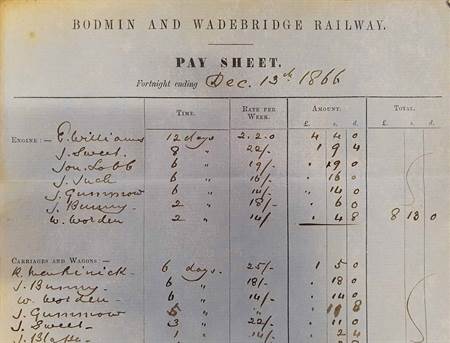
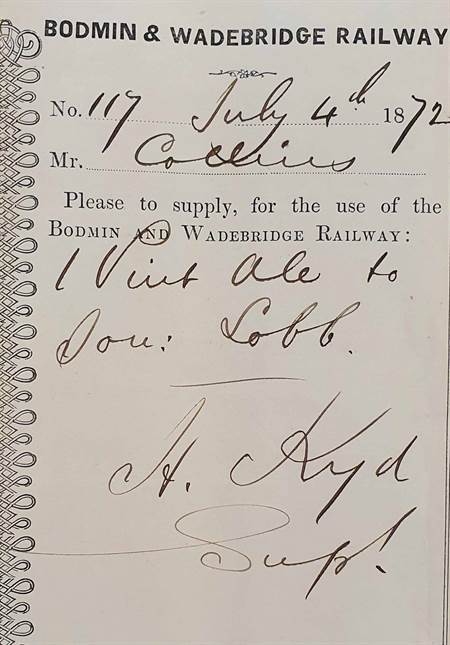
The Bodmin and Wadebridge Railway Company was incorporated by Act of Parliament on 23 May 1832. The principal promoter was Sir William Molesworth of Pencarrow, who along with many local supporters, found the capital of c. £23 000. It was constructed to convey sea sand to the inland agricultural areas and coal for the mines and domestic hearths. Other traffic soon developed; coal for Bodmin gas works, corn, granite from quarries along the line, minerals and timber. A regular passenger coach was run between Wadebridge and Bodmin only.
The main line of the railway was from Wadebridge to Wenford Bridge. Two branches, from Grogley to Ruthern Bridge, and Dunmere to Bodmin, completed the system – 14.75 miles in total. The main line, from Wadebridge to Dunmere and the Bodmin branch was opened on 4th July 1834. The full opening of the railway took place on 30 September 1834.
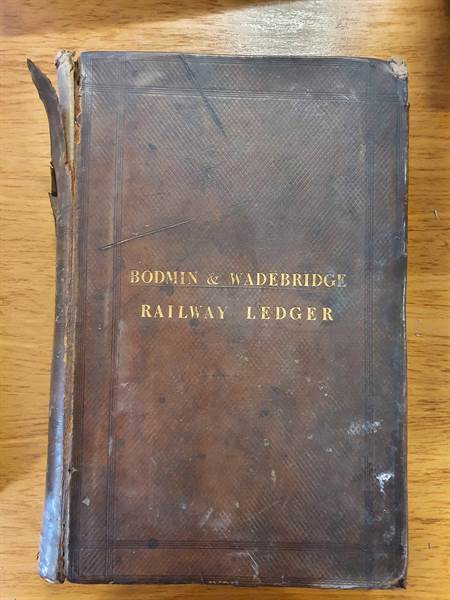
Public wharves (sidings) were at Ruthern Bridge, Nanstallon, Dunmere (Borough Bounds), Helland, Tresarrett, Wenford Bridge and Bodmin. All except the last two were under the charge of women wharfingers – wives or widows of male employees.
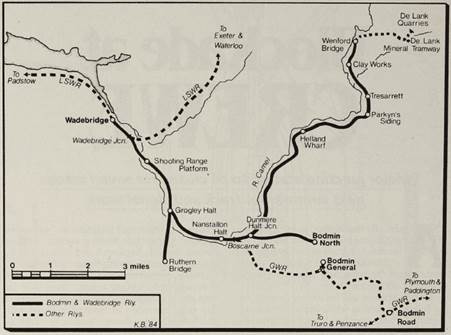
Bodmin and Wadebridge Railway map, from Clinker papers
The Company owned three locomotives; “Camel” delivered in February 1834 and “Elephant” in 1836. Both 0-6-0 type, designed and built by Henry Taylor at Neath Ironworks, South Wales, from where they were brought in parts to Wadebridge by sea. They cost £725 and £800. The name “Elephant” was bestowed by the makers (in absence of instructions from the Company), unaware that “Camel” referred to the river and not the animal. A third engine, “Bodmin”, was bought in 1863. Passenger carriages and goods wagons were constructed at Wadebridge, with ironworks supplied by a local foundry. They consisted of closed first and second class and open third class 4-wheel carriages with chain couplings. Goods wagons had bottom-discharge doors for coal, minerals and sand, and flat wagons for granite.
The Company was taken over by the London and South Western Railway in 1846, but local independent management continued until 1886 when the purchase was regularised by Parliament. One result of this change was the introduction of several L&SW locomotives to replace “Bodmin”, including 2-4-0 tank engines designed by Joseph Beattie and built in 1874-5.
The B&W was physically isolated from other railways until the Great Western branch from Bodmin Road connected with it at Boscarne Junction on 3rd September 1888. The North Cornwall line from Halwill reached Wadebridge on 1st June 1895 and was extended to Padstow on 27th March 1899.
Steam-hauled passenger services ended on the line in 1963, and all passenger services were withdrawn between Padstow and Bodmin Road in 1967. China lay extraction at Wenfordbridge sustained mineral traffic on the line until 1983, when complete closure took place.
In 1974 a preservation society was formed, which became the Bodmin and Wenford Railway. They have established a railway museum at Bodmin General, and run steam hauled passenger trains to Bodmin Parkway and to Boscarne. Home - Bodmin & Wenford Railway (bodminrailway.co.uk)
Part of the route now forms part of the Camel Trail, a cycle and footpath from Wenfordbridge to Padstow. Camel Trail (Padstow to Wenfordbridge) - Sustrans.org.uk
The National Railway Museum includes three carriages built for the Bodmin and Wadebridge Railway when it opened in 1834. The carriages were discovered in a shed on the railway and were put on display at London Waterloo station in 1915 before becoming part of the national collection in 1975.
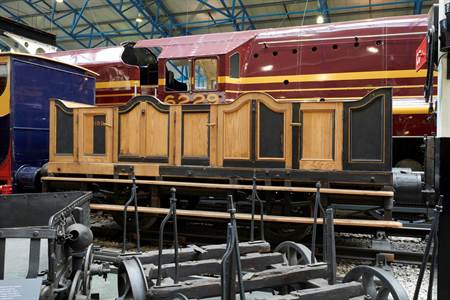
Bodmin & Wadebridge Railway 3rd Class open railway carriage, 1834 | Science Museum Group Collection
The archives were rescued from a dilapidated loft near Wadebridge Station by Charles Clinker in 1952, and donated to Brunel University Library [now in Brunel University London Archives and Special Collections] by Professor Clinker, in 1983, as a small part of The Clinker Collection.
Catalogued by Phaedra Casey, Archivist, April 2022.
If you're still interested, check out our online catalogue.
To make an appointment to view the Bodmin and Wadebridge Archives in person, or for further information, please email: Arc-SC@brunel.ac.uk